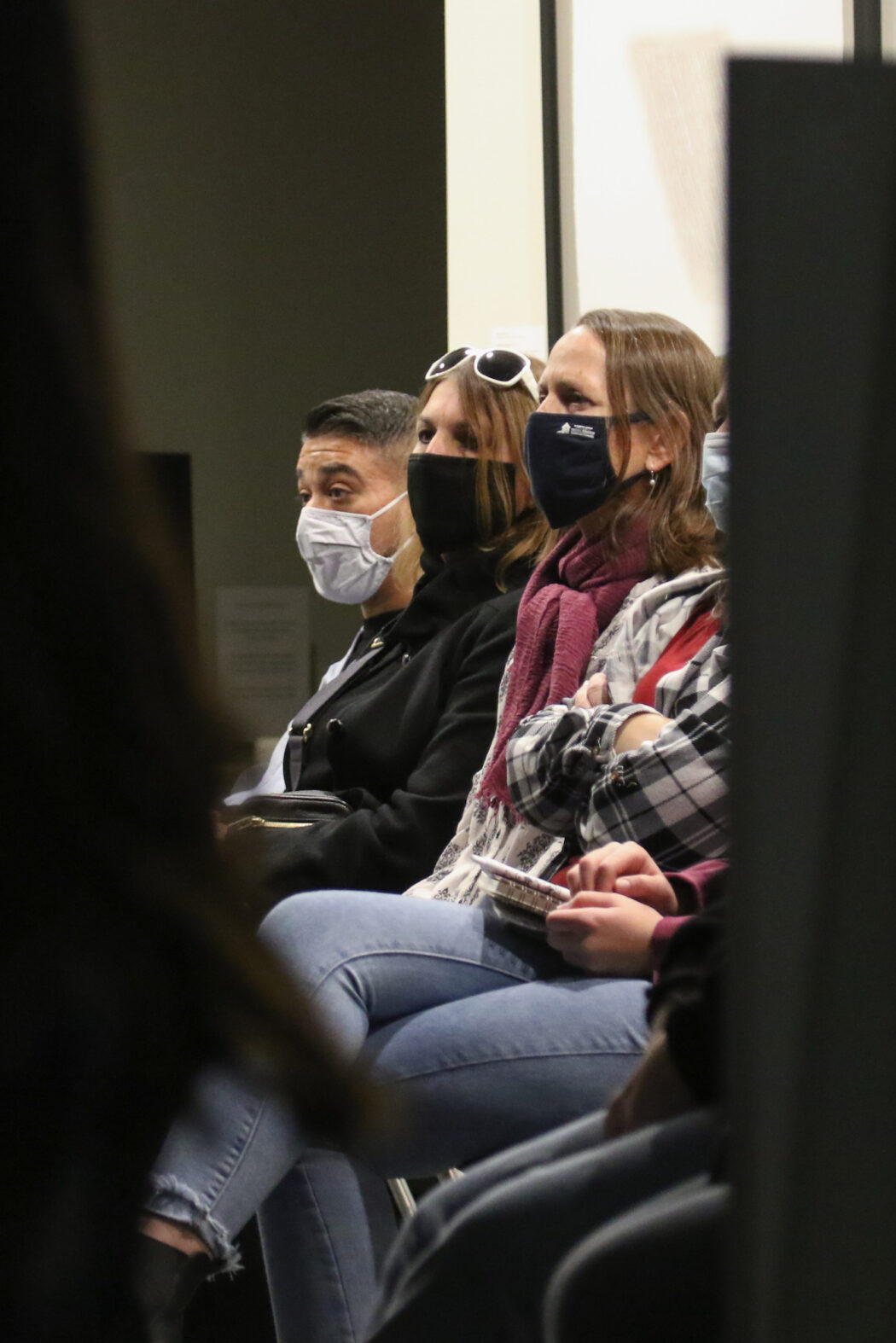Artwork created at Intermountain Indian School is to be displayed at USU
As the Indigenous program coordinator at the Utah State University Inclusion Center, Alina Begay gets to live and advocate for her culture every day.
Begay said she loves to spread awareness about Native American History, especially that of the Native American boarding schools. The topic hits very close to home for Begay, as both of her grandparents worked at Intermountain Indian School in Brigham City.
“A lot of people don’t know about what really happened to the children in those boarding schools,” Begay said, “along with the assimilation and the taking away of our culture.”
On Nov. 11, an event hosted by the Nora Eccles Harrison Museum of Art, the Inclusion Center and PBS Utah delved into the topics surrounding Native American boarding schools. Attendants of the event listened to the book “Cheyanne Again” by Eve Bunting, looked at murals from the now closed Intermountain Indian School, and watched clips from the PBS Utah documentary “Unspoken.”
The content presented at this event shed light into the lives of Indigenous people who were forced to give up their culture due to assimilation.
A section from the documentary said, “Children were separated from siblings. Hair was cut. Uniforms were distributed. No traditional dress was allowed. The students marched to class in the mornings and had trades training in the afternoons. Students were forced to learn and speak English. Their native languages were to be unspoken.”
At the former Intermountain Indian School in Brigham City, many works of art were created by various students including murals, poetry and other forms of artwork.
Once the school was demolished, much of the artwork was destroyed, but there were a few pieces that remained. The chair of the USU Public Art Committee, Katie Lee-Koven, put together a committee to determine what needed to happen to these murals.
“We want to bring them back to the public so that we can share those objects and be a part of the telling of the history of Intermountain,” Lee-Koven said.
The murals are currently a part of a travelling art exhibit — their next destination being the Merril-Cazier Library at the USU Logan campus. The murals will be on campus near the beginning of spring semester.
“I think art is one of the most amazing ways to share history and stories,” Lee-Koven said. “And these murals are some of the few physical material objects that still exist from this school.”
The final destination for these pieces of art will be USU Brigham City where they will be conserved and protected, according to Lee-Koven.
An attendee of the event, Karen Begaii-Wilson, was born and raised inside the walls of Intermountain. Not only did she grow up surrounded by these pieces of art, she watched much of the art be created. She was delighted when she found out the artwork was going to be returned to its original town — Brigham City.
“I really connect to the artwork because it depicts my home,” Begaii-Wilson said. “When those artists drew pictures of the reservation, I consider it home because that is where my parents and my grandparents are from.”
Begaii-Wilson is filled with gratitude that this art is now protected as it represents her history.
“I’m really looking forward to the day when they finally get everything situated and have them all set up in Brigham City,” Begaii-Wilson said.
One of the biggest themes of this event was to bring awareness to topics surrounding the history of Indigenous people, as many of the hardships they experienced in the past are still present today.
James Swensen, an associate professor of art and history at BYU, as well as one of the people who has helped gather the artwork and poetry, said this art displays who these people were in an amazing way.
“The art really shows them as well-rounded human beings,” Swensen said. “It represents more than just a narrative of victimhood — which is an appropriate reaction to boarding schools — but as with every human experience, there is more to it.”
Swensen said for USU students to be supportive of and educated on these topics, they should have humility and acknowledge the history, learn from it and simply listen to the stories and struggles of those who are unlike you, according to Swensen.

